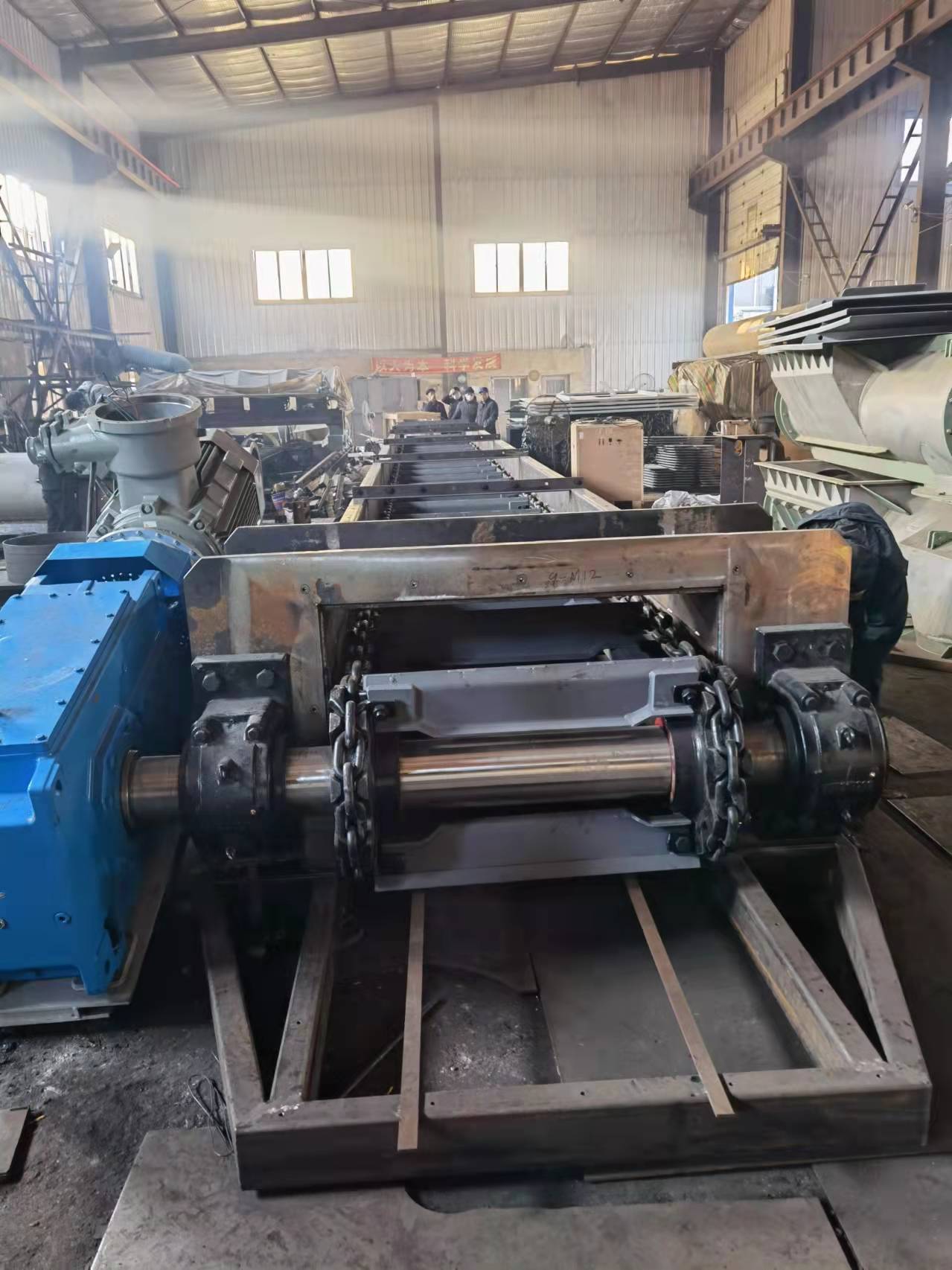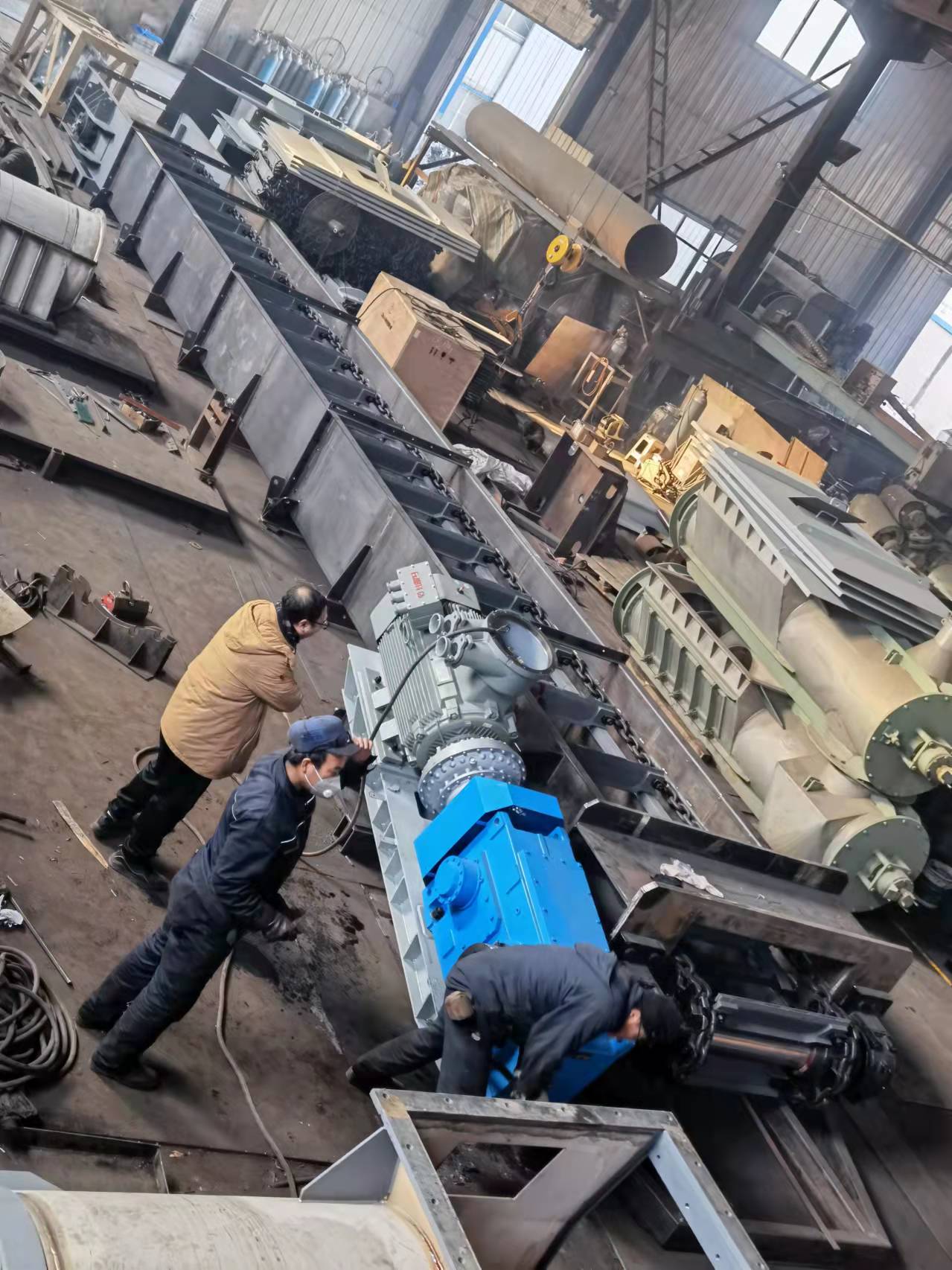Revolutionizing Material Handling: JULI 's Buried Scraper Conveyor
Revolutionizing Material Handling: JULI 's Buried Scraper Conveyor
In the fast-paced world of material handling and mining, it is essential to have robust and reliable conveyor systems that can handle heavy loads and operate efficiently in challenging environments. One innovative solution that has been revolutionizing the industry is the buried scraper conveyor, and China has been leading the way in developing this technology.

The buried scraper conveyor is a type of bulk material handling equipment that is used for transporting materials such as coal, cement, and ash in power plants, cement plants, and mining operations. Unlike traditional conveyor systems, the buried scraper conveyor is designed to operate underground, making it a perfect choice for applications where space is limited or when the conveyor needs to be installed at a depth below the ground.
JULI has been at the forefront of developing and manufacturing high-quality buried scraper conveyors, with several companies offering advanced solutions that are tailored to the specific requirements of different industries. These conveyors are known for their durability, efficiency, and low maintenance, making them a cost-effective choice for businesses that are looking to upgrade their material handling infrastructure.
One of the main advantages of the buried scraper conveyor is its ability to handle a wide range of materials, including abrasive and corrosive substances, without the risk of spillage or environmental contamination. This is achieved through the use of heavy-duty chains and scrapers that are designed to withstand the harsh conditions of underground operations, ensuring reliable performance and long service life.
In addition to their robust construction, China's buried scraper conveyors are also equipped with advanced control and monitoring systems, which allow operators to optimize the conveyor's operation, track the flow of materials, and diagnose any potential issues in real-time. This level of automation and connectivity not only improves the efficiency of material handling processes but also reduces the risk of downtime and costly repairs.
Another key feature of China's buried scraper conveyors is their flexibility and adaptability to different layouts and operating conditions. Whether it's a straight-line installation or a complex network of conveyors with multiple discharge points, these systems can be custom-designed to meet the specific needs of a facility, maximizing the use of available space and streamlining the flow of materials.
From a maintenance perspective, China's buried scraper conveyors are designed with ease of access in mind, making it simple for operators to perform routine inspections and servicing tasks. This reduces the need for prolonged downtime and minimizes the risk of unexpected breakdowns, ensuring a consistent and uninterrupted flow of materials.
As the demand for efficient and sustainable material handling solutions continues to grow, the buried scraper conveyor has emerged as a game-changer in the industry, offering a reliable and cost-effective alternative to traditional conveyor systems. With China's expertise in manufacturing high-quality and innovative conveyor technology, businesses around the world can benefit from cutting-edge solutions that are designed to enhance productivity and reduce operational costs.

In conclusion, JULI 's buried scraper conveyor represents a significant advancement in material handling technology, offering unparalleled durability, efficiency, and adaptability for a wide range of industrial applications. With its robust construction, advanced control systems, and flexibility, this innovative conveyor system is poised to reshape the way materials are transported and processed, setting new standards for reliability and performance in the industry. Businesses that are looking to invest in modernizing their material handling infrastructure should consider the advantages of JULI 's buried scraper conveyor, a solution that is built to meet the challenges of today's evolving industrial landscape.
 O'zbek
O'zbek slovenský
slovenský Azərbaycan
Azərbaycan Қазақ
Қазақ Latine
Latine ລາວ
ລາວ български
български नेपाली
नेपाली فارسی
فارسی Javanese
Javanese Українська
Українська Lietuvos
Lietuvos Română
Română Slovenski
Slovenski پښتو
پښتو Punjabi
Punjabi Bosanski
Bosanski Malti
Malti Galego
Galego Afrikaans
Afrikaans Esperanto
Esperanto 简体中文
简体中文 Српски
Српски मराठी
मराठी Ελληνικά
Ελληνικά čeština
čeština Polski
Polski ไทย
ไทย Nederlands
Nederlands Italiano
Italiano Tiếng Việt
Tiếng Việt Deutsch
Deutsch français
français русский
русский Português
Português Español
Español 한국어
한국어 Svenska
Svenska Malay
Malay اردو
اردو norsk
norsk Indonesia
Indonesia عربى
عربى Gaeilge
Gaeilge Türk
Türk Pilipino
Pilipino हिन्दी
हिन्दी Dansk
Dansk বাংলা
বাংলা English
English


Juli Engineering Leads the Industry as a Trusted Belt Conveyor Manufacturer
As global industries continue to modernize production and logistics systems, the demand for durable, efficient, and high-performance material handling equipment has never been greater. Among the key players driving this evolution, Juli Engineering has established itself as a leading name among Belt Conveyor manufacturers, offering innovative solutions that enhance productivity, safety, and operational efficiency across a wide range of sectors.
Read MoreJuli Engineering Unveils High-Efficiency Enameled Tube Preheaters for Industrial Applications
In an era where energy efficiency and environmental responsibility are top priorities, Juli Engineering is setting new standards in industrial heat exchange technology with its latest range of Enameled Tube Preheaters. Designed to deliver superior heat transfer performance, corrosion resistance, and long-term durability, these preheaters are helping industries enhance energy recovery and reduce emissions.
Read MoreJULI Emerges as a Leading Pipe Belt Conveyor Manufacturer Driving Innovation in Material Transport
In the evolving landscape of bulk material handling, pipe belt conveyors have gained global recognition for their ability to combine efficiency, environmental protection, and long-distance conveying capabilities. Among the top pipe belt conveyor manufacturers, JULI stands out for its advanced engineering, exceptional product quality, and commitment to sustainable industrial development.
Read More